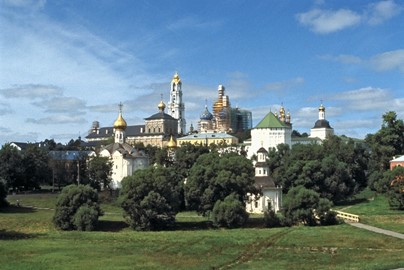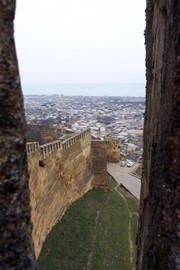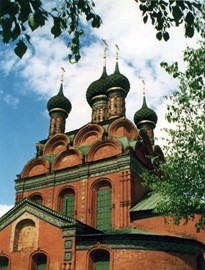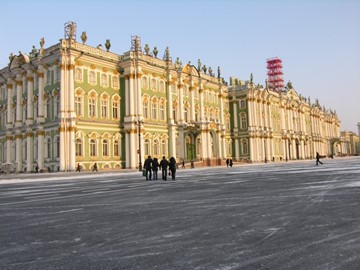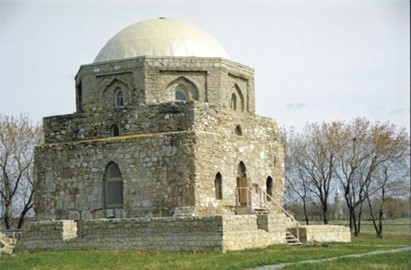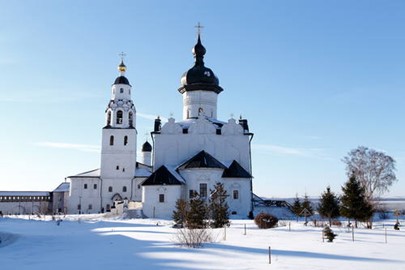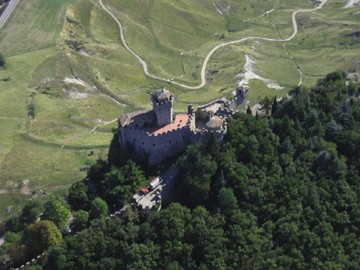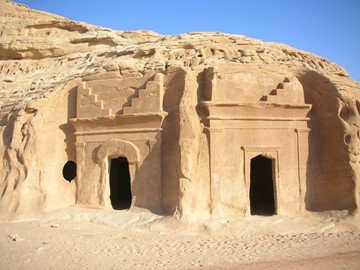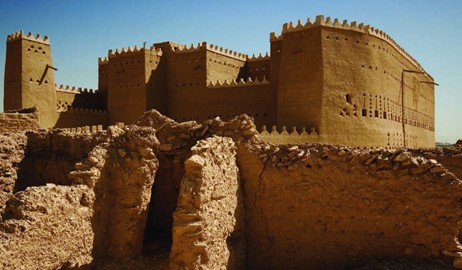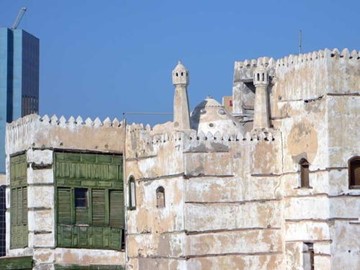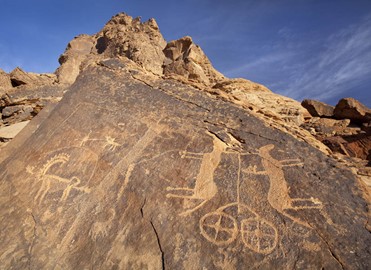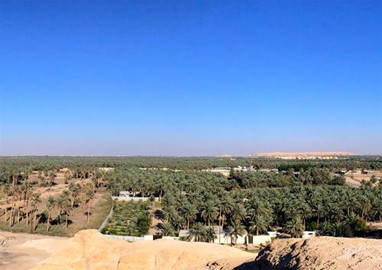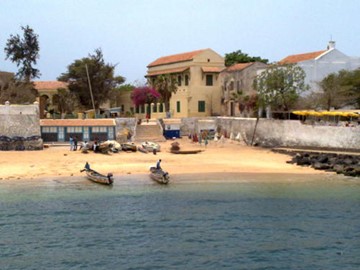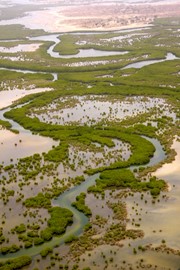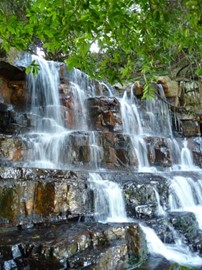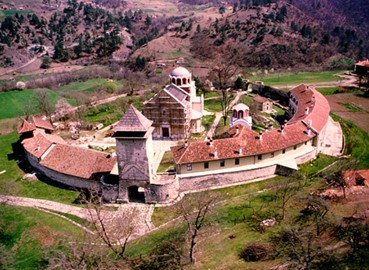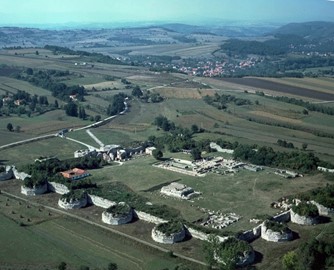category :: cultural
Church of the Ascension, Kolomenskoye
The Church of the Ascension in Kolomenskoye, a UNESCO World Heritage site in Russia, is a remarkable example of early Russian architecture. Built in 1532 to commemorate the birth of Ivan the Terrible, this white stone church features a distinctive tent-shaped roof, a pioneering design in Russian ecclesiastical structures. Its elegant, upward-soaring form symbolizes a connection between heaven and earth, reflecting the spiritual aspirations of its time. Today, it stands as a well-preserved monument, offering... Read More
Trinity Sergius Lavra
Trinity Sergius Lavra, a UNESCO World Heritage site in Russia, is a prominent Orthodox monastery founded in the 14th century by St. Sergius of Radonezh, a key figure in Russian monasticism. Renowned for its spiritual significance and architectural grandeur, it features a complex of historic buildings, including the Trinity Cathedral with its ancient frescoes and the imposing Assumption Cathedral. The site has long served as a center of religious life, education, and pilgrimage, reflecting centuries of Russi... Read More
Kazan Kremlin
The Kazan Kremlin, a UNESCO World Heritage site in Russia, is a historic citadel showcasing a unique blend of Tatar and Russian architectural styles. Constructed primarily in the 16th century under Ivan the Terrible’s reign, it features notable structures like the Annunciation Cathedral and the leaning Söyembikä Tower, reflecting its rich cultural and political history. Originally a Tatar fortress, it was transformed into a Russian stronghold, symbolizing the region’s complex past. Today, it serves as a key... Read More
Ferapontov Monastery
Ferapontov Monastery, a UNESCO World Heritage site in Russia, is a well-preserved example of medieval Orthodox architecture and art. Founded in the late 14th century by Saint Ferapont, the monastery is renowned for its stunning frescoes, painted in 1502 by the master artist Dionisy, which adorn the interior of the Cathedral of the Nativity of the Virgin. These vibrant, detailed murals, along with the monastery’s serene white-stone structures, reflect Russia’s rich spiritual and cultural heritage, making it ... Read More
Derbent
Derbent, a UNESCO World Heritage site in Russia, is an ancient city renowned for its historical and cultural significance. Founded in the 8th century, it boasts a well-preserved citadel, massive defensive walls, and a strategic location along the Caspian Sea, reflecting its role as a key stronghold in the region. The site showcases a blend of Persian, Islamic, and Russian influences, evident in its architecture and artifacts. Derbent stands as a testament to centuries of civilization and trade along the Sil... Read More
Novodevichy Convent
The Novodevichy Convent, a UNESCO World Heritage site in Russia, is a historic fortified monastery founded in 1524 by Grand Prince Vasili III to commemorate the conquest of Smolensk. Renowned for its striking architecture, the convent features a blend of Moscow Baroque style with its golden-domed churches, whitewashed walls, and ornate frescoes, reflecting centuries of Russian Orthodox heritage. It served as a religious and cultural center, housing noblewomen and playing a significant role in the country's ... Read More
Yaroslavl
The Historic Centre of Yaroslavl, a UNESCO World Heritage site in Russia, is a remarkably well-preserved example of a Russian town that developed from the 11th century into a thriving commercial and cultural hub. Its urban layout reflects a blend of radial planning and traditional Russian architecture, featuring notable landmarks like the Assumption Cathedral and the Church of Elijah the Prophet, adorned with stunning frescoes. Recognized for its historical significance and architectural harmony, it stands ... Read More
Saint Petersburg
The Historic Centre of Saint Petersburg, a UNESCO World Heritage site in Russia, is famed for its breathtaking architecture, deep historical roots, and cultural importance. Established in 1703 by Tsar Peter the Great, it features splendid palaces, elaborate churches, and top-tier museums, such as the Hermitage, a global leader among art galleries. Its charming canals and graceful bridges showcase a mix of Baroque and neoclassical designs, giving it the title 'Venice of the North.' The city, highlighted by l... Read More
Bolgar
Bolgar, a UNESCO World Heritage site in Russia, is an ancient city along the Volga River that served as a key political and cultural center from the 7th to 15th centuries. It preserves evidence of the Volga Bulgar civilization and the Golden Horde's first capital, showcasing medieval Muslim architecture and archaeological remains. The site reflects centuries of cultural exchange in Eurasia and remains a sacred pilgrimage destination for Tatar Muslims due to its historical adoption of Islam in 922 AD.
Sviyazhsk
The Assumption Cathedral and Monastery of Sviyazhsk, a UNESCO World Heritage site in Russia, is a remarkable 16th-century complex renowned for its historical and architectural significance. The cathedral, built between 1555 and 1561, showcases a unique blend of Pskov and Moscow architectural styles, featuring vibrant frescoes that rank among the finest examples of Eastern Orthodox art. The monastery, established as a spiritual and defensive outpost during Ivan the Terrible’s reign, reflects Russia’s cultura... Read More
Brimstone Hill Fortress
Brimstone Hill Fortress, a UNESCO World Heritage site, is a well-preserved 17th-century military fortification showcasing British colonial architecture and engineering. Constructed by African slaves, it features robust stone walls, barracks, and cannons strategically positioned to defend against European rivals. The fortress served as a key stronghold during conflicts in the Caribbean, reflecting its historical significance as a symbol of colonial power and resistance. Today, it stands as a testament to the... Read More
San Marino
San Marino, one of the world’s smallest and oldest republics, is a landlocked microstate enclaved within Italy, renowned for its medieval architecture and rich history dating back to 301 CE. At its heart lies Mount Titano, a prominent limestone peak rising 739 meters above sea level, designated a UNESCO World Heritage site for its cultural significance. The mount features three iconic towers—Guaita, Cesta, and Montale—built between the 11th and 14th centuries, which symbolize the nation’s independence and o... Read More
Al Hijr
Al-Hijr, also known as Madâin Sâlih, is a UNESCO World Heritage site in Saudi Arabia renowned for its well-preserved archaeological remains dating back to the Nabataean Kingdom (1st century BCE to 1st century CE). The site features over 100 monumental tombs carved into sandstone cliffs, adorned with intricate facades that reflect a blend of Nabataean, Hellenistic, and Roman architectural influences. In addition to the tombs, Al-Hijr includes ancient wells, inscriptions, and remnants of settlements that high... Read More
At Turaif District
At-Turaif District, a UNESCO World Heritage site in Saudi Arabia, is a historic area renowned for its well-preserved mud-brick architecture and cultural significance. Established in the 15th century, it served as the first capital of the Saudi dynasty, showcasing traditional Najdi urban design with palaces, mosques, and residential quarters. The site reflects the region’s political and religious heritage, offering insights into the early governance and societal structure of the Arabian Peninsula. Its restor... Read More
Jeddah
Jeddah, known as the Gate to Makkah, is a historic port city in Saudi Arabia recognized as a UNESCO World Heritage site for its rich cultural and architectural legacy. Its old town, Al-Balad, features centuries-old coral stone buildings, traditional souks, and ancient mosques, reflecting its role as a key trading hub and pilgrimage entry point. Today, Jeddah blends this heritage with modern developments, making it a vital cultural and economic center in the region.
Rock Art in the Hail Region
Rock Art in the Hail Region, a UNESCO World Heritage site in Saudi Arabia, features an extraordinary collection of ancient petroglyphs and inscriptions dating back thousands of years. These artworks, etched into sandstone outcrops, depict human and animal figures, hunting scenes, and symbolic motifs, offering a glimpse into the prehistoric cultures of the Arabian Peninsula. Recognized for its outstanding universal value, the site showcases the artistic and historical significance of early human expression i... Read More
Al Ahsa Oasis
Al-Ahsa Oasis, a UNESCO World Heritage site in Saudi Arabia, is a remarkable cultural and natural landmark renowned for its historical significance and unique landscape. This sprawling oasis features over 2.5 million date palms, sustained by an intricate network of springs and ancient irrigation systems, showcasing traditional agricultural practices that date back centuries. The site also includes archaeological remains, historic settlements, and traditional architecture, reflecting its role as a vital hub ... Read More
Island of Gorée
The Island of Gorée, a UNESCO World Heritage site off the coast of Senegal, is a small yet historically significant island known for its role in the Atlantic slave trade. It served as a key trading post where enslaved Africans were held before being shipped across the ocean, with sites like the House of Slaves standing as poignant reminders of this dark chapter. Today, the island preserves its colonial architecture and museums, offering insight into its past while attracting visitors globally. Its recogniti... Read More
Island of Saint Louis
The Island of Saint-Louis, a UNESCO World Heritage site in Senegal, is a historic colonial settlement founded by French settlers in the 17th century. Renowned for its well-preserved architecture, the island showcases a blend of European and African influences, with charming pastel-colored buildings, narrow streets, and a distinctive grid layout. Once a bustling hub for trade and administration, it served as the capital of Senegal until 1957. Today, it stands as a cultural treasure, reflecting the region’s c... Read More
Saloum Delta
The Saloum Delta, a UNESCO World Heritage site in Senegal, is a biodiverse region where the Saloum River meets the Atlantic Ocean. This unique ecosystem features mangrove forests, lagoons, and islands that support a rich array of wildlife, including migratory birds and marine species. The site also holds cultural significance, with ancient burial mounds and archaeological remains reflecting centuries of human history tied to the delta’s resources. Its natural beauty and historical value make it a globally r... Read More
Bassari Country
Bassari Country, a UNESCO World Heritage site in Senegal, is a well-preserved cultural landscape showcasing the traditions of the Bassari, Fula, and Bedik peoples. Nestled in a remote region, it features traditional villages with circular thatched huts, terraced fields, and sacred sites that reflect a harmonious blend of human activity and the natural environment. Recognized in 2012, this site highlights unique agro-pastoral practices, social customs, and spiritual beliefs that have endured for centuries, o... Read More
Stari Ras and Sopocani
Stari Ras and Sopocani, a UNESCO World Heritage site in Serbia, represent a significant historical and cultural landmark from the medieval period. Stari Ras, an early capital of the Serbian state, features remnants of ancient fortifications, churches, and monasteries that showcase the region’s political and religious past. Nearby, the Sopocani Monastery, founded in the 13th century, is renowned for its well-preserved frescoes, considered masterpieces of European medieval art. Together, they highlight Serbia... Read More
Studenica Monastery
Studenica Monastery, a UNESCO World Heritage site in Serbia, is a 12th-century Serbian Orthodox monastery renowned for its exceptional architecture and historical significance. Founded by Stefan Nemanja, the father of the medieval Serbian state, it features a blend of Romanesque and Byzantine styles, with the Church of the Virgin showcasing stunning frescoes from the 13th century. The monastery has long served as a spiritual and cultural center, housing a rich collection of manuscripts and religious artifac... Read More
Kosovo Medieval Monuments
The Medieval Monuments in Kosovo, a UNESCO World Heritage site in Serbia, encompass four exceptional examples of Byzantine and Orthodox Christian architecture from the 13th to 17th centuries. These include the Patriarchate of Peć Monastery, Gračanica Monastery, Our Lady of Ljeviš church, and Dečani Monastery, each renowned for their well-preserved frescoes, intricate stonework, and historical significance. They collectively represent the rich cultural and religious heritage of the Serbian Orthodox Church du... Read More
Gamzigrad Romuliana
Gamzigrad-Romuliana, a UNESCO World Heritage site in Serbia, is a well-preserved late Roman palace complex built in the early 4th century by Emperor Galerius. This archaeological treasure features fortified walls, imperial residences, basilicas, and intricate mosaics, showcasing Roman architecture and artistry. It served as a luxurious retreat and a testament to Galerius’ power during his reign in the Tetrarchy system. Today, it stands as a significant historical site, offering insights into the late Roman ... Read More

